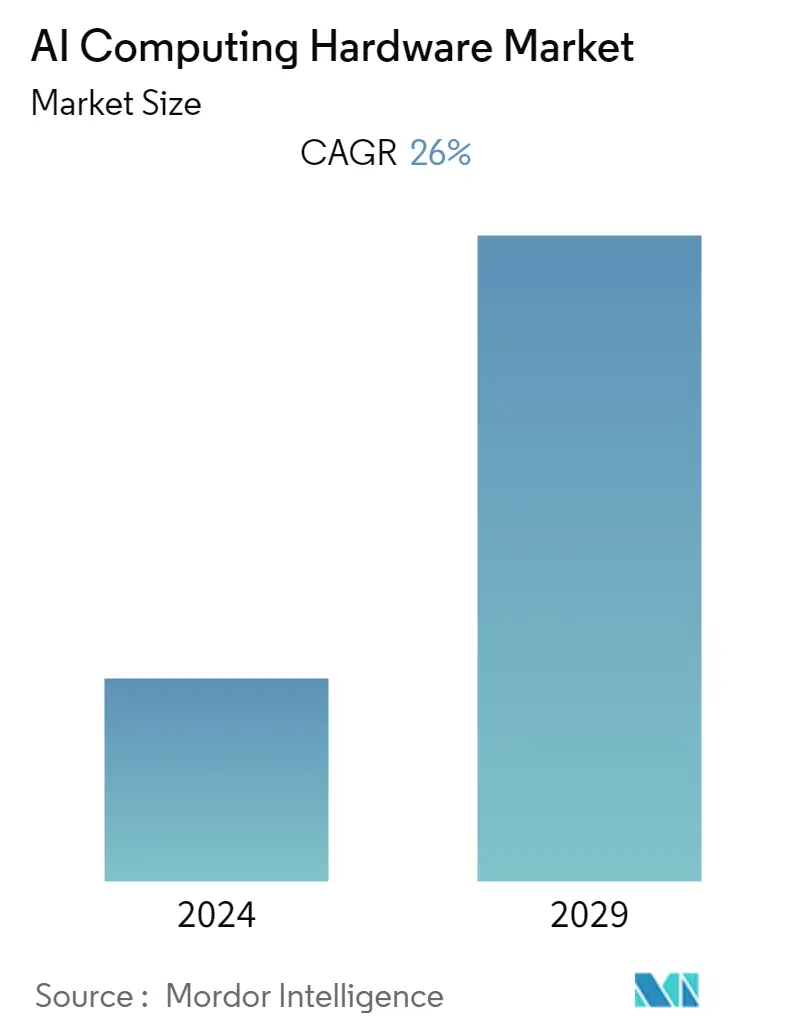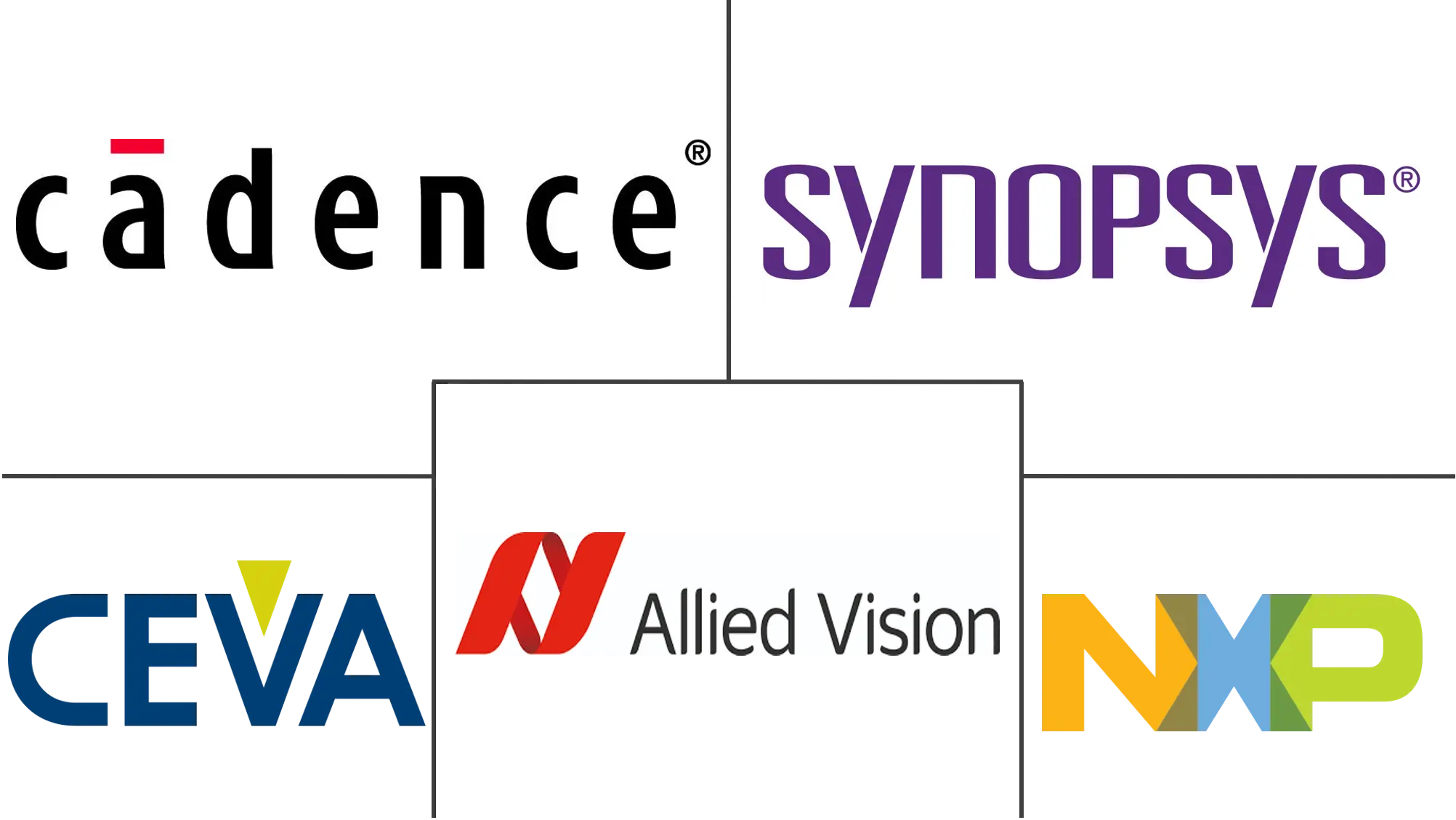Market Size of AI Computing Hardware Industry

| Study Period | 2019 - 2029 |
| Base Year For Estimation | 2023 |
| CAGR | 26.00 % |
| Fastest Growing Market | Asia Pacific |
| Largest Market | North America |
| Market Concentration | Low |
Major Players
*Disclaimer: Major Players sorted in no particular order |
Need a report that reflects how COVID-19 has impacted this market and its growth?
AI Computing Hardware Market Analysis
The AI computing hardware market is expected to record a CAGR of 26% during the forecast period (2021 - 2026). More recently, the AI boom has sparked a stream of startup hardware companies developing more specialized chips, which are optimized for specific applications, such as autonomous driving and surveillance cameras. Graphcore and a few other players offer much more flexible chips, which are not only crucial for developing AI applications but also much more challenging to produce. In December 2019, Microsoft funded USD 200 million to Graphcore to find hardware that will make its cloud services more attractive to the growing number of customers for AI applications. If sustained, the increasing number of cloud services may help in growing the hardware market.
- The demand for AI computing hardware in the defense sector drives the market. The air force needs unconventional computing architectures for pattern recognition, event reasoning, decision making, adaptive learning, and autonomous tasking on energy-efficient manned and unmanned aircraft. As per researchers, the major focus area is neuromorphic computing or brain-inspired computing that involves processors more advanced than more-traditional the Von Neumann architectures. This kind of design could lead to unconventional circuits based on emerging nanotechnologies, like memristors and nano-photonics.
- The adoption of field-programmable gate arrays (FPGAs) for high-computing speed drives the market. The FPGA provides low thermal outputs and low latencies and offer an alternative deep learning processor with great potential. For example, with some programming efforts, developers can modify FPGAs, like a software to execute various neural networks. If an application requires several neural networks over time, FPGAs represent a good option. Further, hardware accelerators, like FPGAs, are increasingly important in server systems that run heavy AI training or database workloads in many industries.
- In September 2019, Intel announced to ship new Intel Stratix 10 DX field-programmable gate arrays (FPGAs) to help accelerate workloads in the cloud and in enterprises using Intel's data center technology. They also help increase bandwidth and hardware acceleration for some upcoming Intel Xeon Scalable processors, showing 37% lower latency and a theoretical top transfer rate of 28 Gbps.
- However, the impact of COVID-19 affects the growth of the market due to the massive slowdown of the supply chain. In the chip sector, revenues have plunged by nearly 12%, globally, during the pandemic, dropping by nearly USD 57 billion compared to 2018, which may ultimately affect the AI computing processors. Intel saw zero growth in its core microprocessor segment in 2019, while sales of logic chips rose by 7%.
- Further, the growth of the market can be observed in healthcare to provide processor helping medical doctors. In April 2020, AMD announced a COVID-19 HPC (high-performance computing) fund to provide research institutions with computing resources to accelerate medical research on COVID-19 and other diseases. The fund will include an initial donation of USD 15 million of high-performance systems powered by AMD EPYC CPUs (central processing units) and AMD Radeon Instinct GPUs (graphics processing units) to key research institutions. For medical customers, AMD is prioritizing and expediting product shipments, including AMD-embedded processors used in ventilators and respirators.
